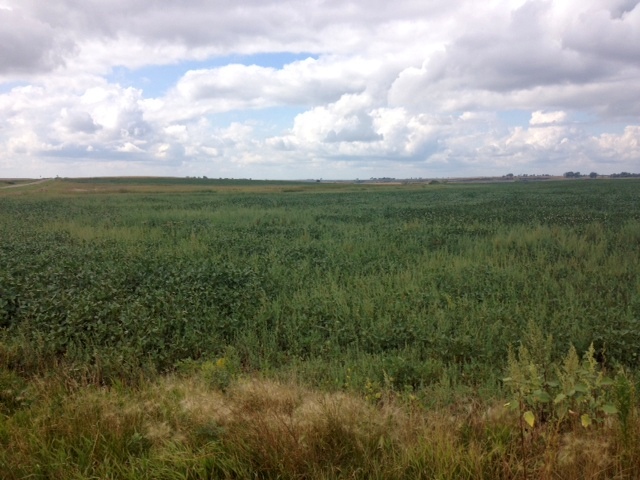Invasion of the Yield Snatchers

Our family loves to watch movies. I was thinking the other day of some of the scarier movies we have seen:
- Invasion of the Yield Snatchers describes resistant weeds that appear out of nowhere and snatch yields and profits from unsuspecting farmers.
- Scream is the harrowing story of a young farmer’s reaction to learning that easy and reliable weed control no longer is easy or reliable.
- Dracula tells the classic tale of the “undead” resistant weeds which appear in the night to suck the lifeblood out of farmers’ production plans.
Now I admit that it has been a while since I watched any of these movies, so my memory might be a little hazy. But having seen the impact of Palmer Amaranth on soybean producers in the south and watching the explosion of resistant weeds in this northern region the past couple of years, these titles and descriptions seem quite plausible to me.
“Houston, we have a problem,” to quote a very different kind of film.
But unlike so many movies, our problem will not be solved by some heroic figure or cleanly wrapped up in a 90-minute timeline.
I was privileged to attend the Weed Resistance Global Symposium in Paris last October, and even though I have been studying, working with, and talking about weed resistance for a long time, I came away chastened.
Weed scientists, farmers and consultants worldwide described broadening and increasing resistance issues. And not just to glyphosate. Over 100 weeds are showing resistance to one or more herbicides. Nearly all current herbicides have one or more weeds that are resistant. And there is a rapid increase of weeds resistant to multiple modes of action.
To further compound the issue, no new modes of action have been introduced since the 1980s. And none are expected for at least another decade. Aside from a handful of new traits in the next few years, we will have to manage this issue with the tools we have.
The current reality: Weed resistance has been a problem for more than 40 years. It is worldwide, not limited to only glyphosate, and it is growing rapidly. The great run that we have had with glyphosate over the past 15 years is not normal, and it is unlikely that we will ever experience that again.
The future reality: There is no silver bullet. LibertyLink, Xtend (dicamba), Enlist (2,4-D) and Balance (HPPD) traits will be a great help. But if we abuse these traits, we will be facing multiple resistant weeds very quickly.
We will need to use all available tools – multiple modes of action, tank mixes, and non-chemical strategies such as modifying our crop rotations and tillage practices. We will need to rotate our modes of action and be very accurate with our timing. It will be hard work.
And pulling a theme from Star Trek, “Resistance is not futile”. But it won’t be easy either.
Learn more by attending the Weed Resistance Regional Symposium on February 5th at the Holiday Inn in Fargo.



